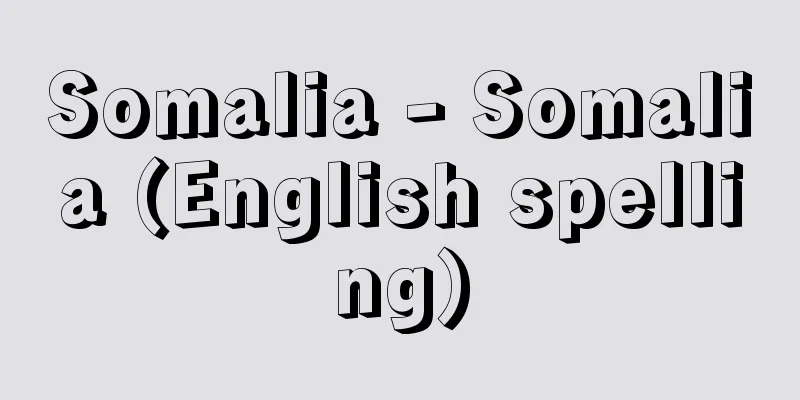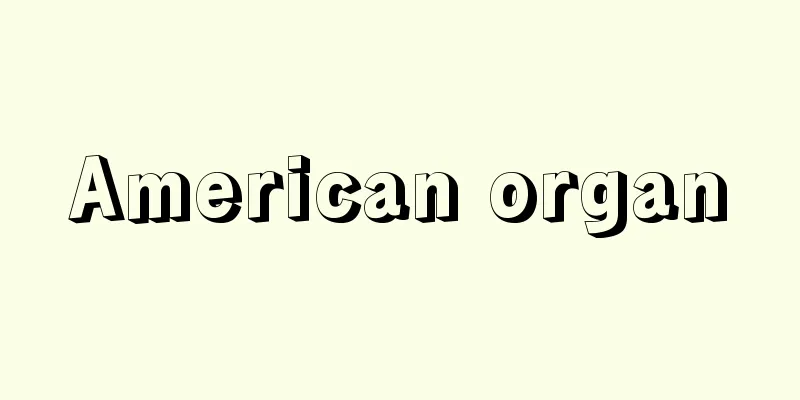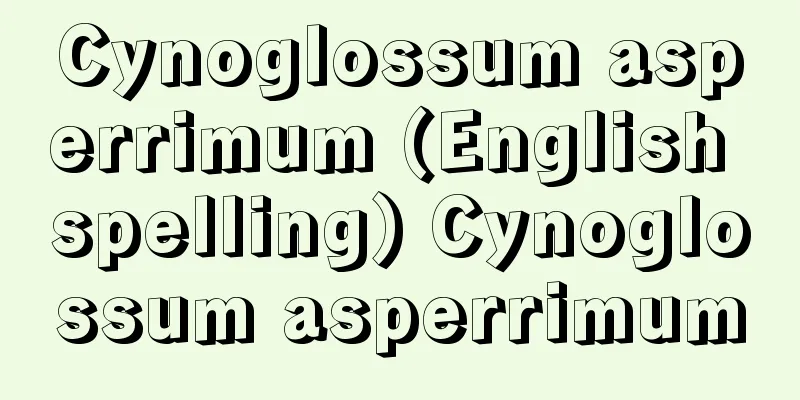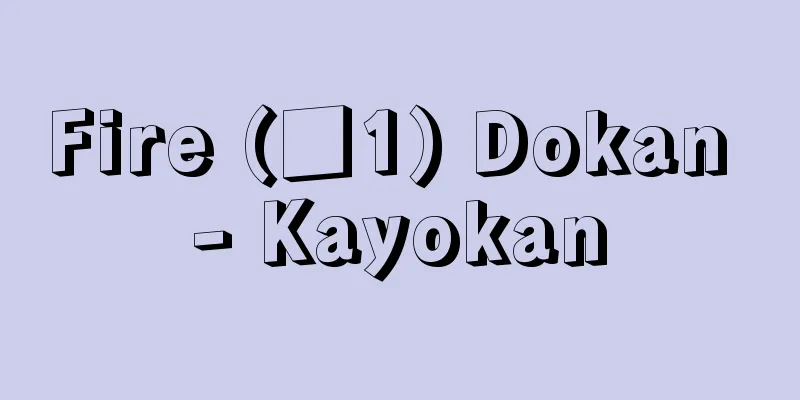Somalia - Somalia (English spelling)

|
A country occupying most of the Somali Peninsula, known as the "Horn of Africa," at the northeastern tip of the African continent. Its official name is the Democratic Republic of Somalia, Al-Jumhurīya al-Somaliya al-Dimuqrātīya. It faces the Indian Ocean to the east and south, and borders Yemen across the Gulf of Aden, the mouth of the Red Sea, to the north, Djibouti on its northwestern tip, and Ethiopia and Kenya to the west. It has an area of 637,657 square kilometers and a population of 8,228,000 (2005 estimate). Its capital is Mogadishu. [Ken Akasaka] NatureIn the north, there are mountain ranges over 2000 meters above sea level that extend from the Ethiopian Highlands, passing through the savanna plains and continuing to the subtropical region in the south. The Juba River and the Siberi River are rivers that flow throughout the year, and a coastal plain is also formed. The rest of the country is dry and barren. The climate is generally hot, with the average July temperature in Berbera on the Gulf of Aden reaching 36°C. The northern highlands, including Hargeisa, are relatively mild, with an average annual temperature of 22°C. [Ken Akasaka] GeographyThe population density is 14 people per square kilometer, and nomadic Somalis live in various areas. The population is concentrated in cities such as Berbera and Hargeisa in the north, Mogadishu and Kismayu in the south, and in the agricultural land between the Juba and Siberian rivers. The capital, Mogadishu, has a population of about 1.16 million, and the population has been rapidly concentrated since independence. It was an Islamic city with an old tradition, but many Italian-style buildings remain due to the colonial era. Ibn Battuta also visited in the 14th century and recorded its prosperity. Kismayu in the south is the center of the Juba River basin, and is home to meat and fish canning industries. Berbera in the north is a port city and a center for livestock exports to Aden on the opposite bank. [Ken Akasaka] historyThere is a theory that Somalia was the land of Punt, which traded with ancient Egypt, and it has been open since ancient times. In particular, the Red Sea and Gulf of Aden coast in the north were known as the Cinnamon Coast and were known as a producer of spices. From around the 10th century, Arab trading posts were built on the eastern coast, and became a base for exporting rubber and timber. Mogadishu was one of them, and became a base for spreading Islam to inland nomads. Originally inhabited by nomadic Somalis, they converted to Islam in the 10th century and mediated trade between the Gulf of Aden and the Indian Ocean and inland Ethiopia. The Somalis did not form a single centralized state, but the Adal principality in the north expanded its power in the 16th century and invaded Ethiopia. From the 18th century onwards, Somali trading cities were ruled by Arabs and the Ottoman Empire. Portugal also showed interest in Somalia from East Africa, but did not establish its influence there. Meanwhile, Italy, which had established a protectorate over Ethiopia, expanded its influence along the eastern and southern coasts of Somalia, obtaining leases from the Sultan of Zanzibar over the ports of Mogadishu, Brava, Merka and Warsheik in 1892, and completing its direct rule in 1905. Meanwhile, in the north, British explorer Richard Burton was the first to enter northern Somalia from the Harar Plateau in 1854. In 1884, Britain took control of the north as the Somaliland Protectorate, dividing Somalia into three parts with France in the west and Italy in the south. The local population also resisted fiercely, and a rebellion led by Mohammed Abdil Hassan (1864-1920) lasted for 20 years, earning him the title of "Mad Mullah." As a result of the Italo-Ethiopian War of 1935, Italy took control of all of Ethiopia, and then occupied the Somaliland Protectorate from 1940 until the end of World War II. During this time, Somalia was under Italian control, except for northern Kenya and Djibouti. Following Italy's defeat in Northeast Africa in 1941-1942, Britain took over and continued to rule in the same way for several years. In May 1941, Emperor Haile Selassie returned to Addis Ababa and demanded the return of the former Italian colonies, but the Somali-inhabited Haud and Ogaden regions, as well as other reserved areas, remained under British military rule. In 1949, it was decided to place the former Somali colonies under the Italian UN Mandate for ten years, but the Ethiopian Emperor denounced it as a violation of the principle of Somali self-determination. Meanwhile, the Somali Youth League, formed in Mogadishu, called for cultural and political freedom, and its movement spread rapidly throughout Somalia. In June 1960, the northern part of the country became independent as Somaliland, and in July of the same year it was united with the southern part, which had been under Italian trusteeship, to form the Republic of Somalia. Abdirashid Ali Shermarke (1919-1969), leader of the Somali Youth League, was elected as the first president. [Ken Akasaka] PoliticsAfter independence, a coalition government centered on the Somali Youth League was established, but political parties representing small ethnic groups split up and political instability continued. In October 1969, when President Shermarke was assassinated, the military succeeded in a bloodless coup, and the Supreme Revolutionary Council, chaired by military chief of staff Mohamed Siad Barre (1919-1995), took power. The country was renamed the Somali Democratic Republic, and Council Chairman Barre became president, suspended the constitution, and dissolved parliament. In October 1970, Somaliland declared the establishment of a socialist state and established a one-party dictatorship under the newly formed Somali Socialist Revolutionary Party. In August 1979, a new constitution was enacted by referendum, and in December 1984, the constitution was amended to allow the president to be elected by direct election. Meanwhile, in 1974, Somaliland concluded a treaty of friendship and cooperation with the Soviet Union. Since independence, Somaliland has promoted the idea of "Greater Somalia" to unite the Somali people scattered across Ethiopia, Kenya, and Djibouti, and has repeatedly engaged in territorial disputes with Ethiopia in particular. In July 1977, Somaliland supported the Western Somali Liberation Front of Ethiopia, which advocated merging with Somalia, and invaded the Ogaden region. However, it was defeated by the Ethiopian army, which was supported by the Soviet Union, and Somaliland withdrew from the Ogaden region, changed its pro-Soviet policy, and abrogated the treaty of friendship and cooperation with the Soviet Union in November 1977. In 1980, the country allowed the United States to use Berbera port as a naval and air base in exchange for military aid. Armed conflict with Ethiopia flared up again in 1982 and 1983. In addition, there were 1.5 million refugees from the Ogaden region, and anti-government activities such as the Somali Democratic Salvation Front and the Somali National Movement were also active, so the Barre regime faced political and economic difficulties. When Somalia invaded the Ogaden region in 1977, it was criticized by African countries and became politically isolated, but after the 1981 OAU summit, it reconciled with Kenya, which had cooled due to the Somali separatist movement in Kenya. In 1991, the rebel group United Somali Congress (USC) took control of the capital and Ali Mahdi Mohamed (1939-2021) became interim president, but the northern part of the country rebelled, and the interim president's faction and General Mohamed Farrah Aidid's (1934-1996) faction came into conflict, leading to a state of civil war. In April 1992, the United Nations Operation in Somalia (UNOSOM) was established, and in May 1993, the peacekeeping force (UNOSOM II) used force, but it ended in failure with casualties and withdrew in November 1994. In June 1995, Aidid declared himself president and continued fighting with opposing factions, including the faction of Osman Hassan Ali Atto (1940-2013), chairman of the Somali National Union (SNA), who had left Aidid's faction, but he died of injuries sustained during fighting in August 1996. Interim President Mohamed unilaterally declared a ceasefire. In October of the same year, a ceasefire agreement was reached between the three factions of Aidid, Mohamed, and Atto, with the mediation of neighboring Kenya, but fighting continued afterwards. In December 1997, 28 armed factions, including the three factions, signed a peace agreement in Cairo that stipulated an unconditional ceasefire. However, the civil war continued, and a peace conference was held in Djibouti in May 2000. In August of the same year, Abdiqasim Salad Hassan (1941- ) was elected interim president, but clan fighting and unrest continued. In October 2002, the Somali National Reconciliation Conference led by the Intergovernmental Authority on Development (IGAD) was held in Kenya. In August 2004, the Transitional Federal Parliament was established in Nairobi, Kenya, and in October of the same year, the parliament elected Abdullahi Yusuf as interim president. In November, Yusuf appointed Ali Mohamed Gedi (1952- ) as prime minister. In January 2005, the cabinet formed by Prime Minister Gedi was approved by parliament. In June of the same year, the Transitional Federal Government entered Somalia, and Jowhar was made the provisional capital. Meanwhile, in June 2006, the Union of Islamic Courts occupied Mogadishu, and subsequently took control of the southern region as well. On December 24 of the same year, war broke out between the Transitional Federal Government forces, supported by the Ethiopian army, and the Union of Islamic Courts, and on the 30th of that month, the Transitional Federal Government forces and the Ethiopian army occupied the capital, Mogadishu, and also took control of the southern region. However, in November 2007, forces opposed to the Transitional Federal Government intensified their resistance in Mogadishu using guerilla tactics. The situation remains unpredictable. [Ken Akasaka] economyThe gross domestic product (GDP) is $4.809 billion (2005), and the per capita GDP of $600 is one of the lowest in Africa. Soon after independence, Somalia was nicknamed the "graveyard of aid." Since the establishment of the Barre government in 1969, self-reliance has been emphasized, but the country still relies heavily on foreign economic aid. In agriculture, banana production has increased since independence, but this is an export crop to Italy. Production of commercial crops such as sugarcane, foxtail millet, corn, rice, tobacco, and groundnuts has also increased. Agricultural investment is concentrated mainly in the south, especially in the Juba River basin. 60% of the Somali population are nomads who raise livestock such as cattle, camels, sheep, and goats, and leather, butter, and livestock are important exports. However, a drought in 1974 caused the loss of one million livestock, and a policy of settling people into agriculture and fishing was adopted after that. In 1968, a canned meat factory was installed, as were canned tuna and other fish factories, and the excavation of Mogadishu Port was also carried out with assistance from the World Bank. However, the subsequent civil war caused a significant decline in grain production, and in 1996, various countries provided emergency aid at the request of the World Food Programme (WFP). Trading partners include the United Arab Emirates, Yemen, Nigeria, and Kuwait for exports, and Djibouti, Kenya, India, Brazil, and Oman for imports. [Ken Akasaka] societyThe majority of the population is Somali, divided into groups such as Dir, Isak, and Dekir, but they share a common cultural, linguistic, and religious foundation. As a result, Somalia is a rare one-ethnic, one-cultural, one-lingual country in Africa. More than one million Somalis live across the border in countries such as Kenya. The country practices Sunni Islam, and the official language is Somali, a Hamitic language, which has been written in the Latin alphabet since 1972. In addition, Arabic, Italian, and English are also spoken by educated people. Swahili is also widely spoken in coastal towns in the south. Because of the large number of nomads, primary education is not progressing well, even though it is compulsory. There are only 194,335 primary school students and only 37,181 secondary school students (1985). The Somali National University in Mogadishu was founded in 1959 and has 4,650 students (1994). [Ken Akasaka] Relations with JapanJapan recognized its independence in July 1960, but relations between the two countries are still weak. In terms of trade, imports from Japan of automobiles and freight vehicles amounted to 28 million yen, while exports to Japan of fresh fish and other products amounted to 61 million yen (2005). As of fiscal 2005, Japan's official development assistance (ODA) totaled 6.47 billion yen in loan aid, 17.875 billion yen in grant aid, and 868 million yen in technical cooperation. [Ken Akasaka] [References] | | | | | | | [Additional resources] |"> Somalia flag ©Shogakukan Illustration/Shogakukan Creative "> Somalia Location Map Source: Shogakukan Encyclopedia Nipponica About Encyclopedia Nipponica Information | Legend |
|
アフリカ大陸北東端、「アフリカの角(つの)」とよばれるソマリ半島の大部分を占める国。正称はソマリア民主共和国Al-Jumhurīya al-Somaliya al-Dimuqrātīya。東と南はインド洋に面し、北は紅海の入口のアデン湾を隔ててイエメンに対し、北西端でジブチ、西はエチオピアおよびケニアと国境を接している。面積63万7657平方キロメートル、人口822万8000(2005推計)。首都はモガディシオ。 [赤阪 賢] 自然北部には、エチオピア高原から連なる標高2000メートル以上の山地があり、サバンナの平原を経て南の亜熱帯地方に続いている。河川は年間を通して水をたたえるジュバ川とシベリ川があり、海岸平野も形成されている。そのほかは乾燥した不毛の土地となっている。気候は一般に暑く、とくにアデン湾岸のベルベラの7月の平均気温は36℃に達する。ハルゲイサなど北部高地では比較的温和で、年平均気温は22℃である。 [赤阪 賢] 地誌人口密度は1平方キロメートル当り14人で、遊牧民のソマリ人が各地に分散して居住している。人口が集中しているのは、北部のベルベラ、ハルゲイサや、南部のモガディシオ、キスマユなどの都市と、ジュバ、シベリ両河川に挟まれた農耕地に限られている。首都モガディシオは人口約116万で、独立以降の人口集中が急激である。古い伝統のあるイスラム都市であったが、植民地時代の影響でイタリア式の建築が多く残っている。14世紀にはイブン・バットゥータも来訪し、その繁栄を記録にとどめている。南部のキスマユはジュバ川流域の中心地であり、肉や魚の缶詰工業が立地している。北部のベルベラは港町で、対岸のアデンへの家畜輸出の中心地となっている。 [赤阪 賢] 歴史古代エジプトと交易したプントの国をソマリアとする説もあり、古くから開けていた。とくに北部の紅海やアデン湾沿岸はシナモン海岸とよばれ香料の産地として知られた。10世紀ごろからアラビア人の交易基地が東部の海岸に建設され、ゴムや木材の輸出の拠点となった。モガディシオもその一つで、内陸の遊牧民へのイスラム教普及の基地となった。もともと遊牧民のソマリが居住していたが、彼らは10世紀にはイスラムに改宗し、アデン湾やインド洋と内陸のエチオピアなどとの交易を仲介した。ソマリ人は単一の集権国家を形成しなかったが、北部のアダル土侯国は16世紀に勢力を伸長し、エチオピア侵攻を果たしている。18世紀以降、ソマリ人の交易都市はアラブ人やオスマン帝国に支配された。ポルトガルも東アフリカからソマリアへ食指を動かしたが勢力は定着しなかった。一方、エチオピアを保護領としたイタリアが、ソマリアの東部および南部の海岸地域に勢力を拡大した。1892年にはザンジバルのスルタンから、モガディシオ、ブラバ、メルカ、ワルシェイクなどの港の租借権を得て、さらに1905年には直接統治を完成した。 一方、北部では、1854年にイギリスの探検家リチャード・バートンが初めてハラール高原からソマリア北部に入った。1884年にはイギリスが北部をソマリランド保護領として支配し、西部のフランス、南部のイタリアと、ソマリアを三分した。住民の反抗も激しく、ムハンマド・アブディル・ハッサンMohammed Abdullah Hassan(1864―1920)の率いる反乱は20年間続き、「マッド・ムラー」として恐れられた。1935年のイタリア・エチオピア戦争の結果、イタリアはエチオピア全土を支配し、さらに1940年から第二次世界大戦中までソマリランド保護領を占領した。この間、北ケニアとジブチを除いてソマリアはイタリアの支配下にあった。1941年から1942年にかけての北東アフリカにおけるイタリアの敗退で、イギリスがとってかわり、数年間同様の支配を受け継いだ。1941年5月、アディス・アベバに返り咲いたハイレ・セラシエ皇帝はイタリアの旧植民地の返還を要求したが、ソマリ人の居住するハウドおよびオガデン地方と、その他の保留地区はイギリスの軍政下に置かれたままとなった。1949年、旧ソマリ植民地を10年間イタリアの国連委任統治下に置くことが決定されたが、エチオピア皇帝はソマリ人の民族自決の原則を踏みにじるものと非難した。一方、モガディシオで結成されたソマリ青年同盟は文化的・政治的自由を叫び、その運動はソマリア全土に急速に広がった。 1960年6月、北部はソマリランドとして独立、同年7月、イタリアの信託統治となっていた南部と合体してソマリア共和国となった。初代大統領にはソマリ青年同盟のシェルマルケAbdirashid Ali Shermarke(1919―1969)が選出された。 [赤阪 賢] 政治独立後ソマリ青年同盟を中心とする連立政権が発足したが、小民族グループを代表する政党が分立し、政情は不安定な状態が続いた。1969年10月、大統領シェルマルケが暗殺されると、軍部が無血クーデターに成功し、軍参謀長モハメド・シアド・バーレMohamed Siad Barre(1919―1995)を議長とする最高革命評議会が権力を握った。国名をソマリア民主共和国と改称、評議会議長バーレは大統領に就任し、憲法を停止して議会を解散した。 1970年10月には社会主義国家の樹立を宣言し、新たに結成したソマリア社会主義革命党による一党独裁体制を敷いた。1979年8月、国民投票により新憲法を制定、1984年12月、大統領を直接選挙で選ぶよう憲法を改正した。その間、1974年にはソ連と友好協力条約を締結した。また、独立以来、エチオピア、ケニア、ジブチにまたがって分散しているソマリ人を結集する「大ソマリア主義」を打ち出し、とくにエチオピアと領土紛争を繰り返した。1977年7月にはソマリアとの合併を主張するエチオピアの西ソマリア解放戦線を支持し、オガデン地方に侵入した。しかし、ソ連の援助を受けたエチオピア軍に敗れ、オガデン地方から撤退するとともに従来の親ソ路線を転換し、1977年11月には対ソ友好協力条約を破棄した。1980年にはベルベラ港のアメリカ合衆国の海・空軍基地としての使用を認め、そのかわりに軍事援助を受けた。エチオピアとの武力衝突は、その後も1982年、1983年と再燃した。 また、オガデン地方からの150万人に上る難民が存在し、さらにソマリア民主救国戦線、ソマリア民族運動などの反政府活動も活発で、バーレ政権は政治的、経済的に難問を抱えた。1977年のオガデン地方への侵入の際、ソマリアはアフリカ諸国から非難を浴び政治的に孤立したが、1981年のアフリカ統一機構(OAU)首脳会議以降、ケニア国内のソマリ人分離運動のため冷却していたケニアとは和解した。1991年、反政府勢力統一ソマリア会議(USC)の首都制圧でアリ・マフディー・モハメドAli Mahdi Mohamed(1939―2021)暫定大統領が就任したが、北部などが反発、暫定大統領派とアイディードMohamed Farrah Aidid(1934―1996)将軍派が対立し内乱状態に陥った。 1992年4月国連ソマリア活動(UNOSOM)が設置され、1993年5月には平和執行部隊(UNOSOM Ⅱ)が武力行使を行ったが、犠牲者を出すなど失敗に終わり、1994年11月に撤退した。1995年6月アイディードは大統領就任を宣言し、アイディード派から離脱したアリ・アトOsman Hassan Ali Atto(1940―2013)ソマリア国民同盟(SNA)議長派をはじめ、対立する各派と戦闘を継続したが、1996年8月に戦闘中の負傷により死亡した。モハメド暫定大統領は一方的に停戦を宣言した。同年10月隣国ケニアの仲介でいったんアイディード、モハメド、アトの3派の停戦合意が成立したが、その後も戦闘は継続。3派を含む武装28派は、1997年12月カイロで無条件停戦などを定めた和平協定に調印した。しかしその後も内乱は続き、2000年5月ジブチで和平会議が開かれた。同年8月にアブディカシム・サラド・ハッサンAbdiqasim Salad Hassan(1941― )が暫定大統領に選ばれたが、氏族間の闘争、混乱が続いた。 2002年10月より、政府間開発機構(IGAD)主導によるソマリア国民和解会議がケニアにて開催。2004年8月にケニアのナイロビに暫定連邦議会が発足し、同議会は同年10月に暫定大統領としてアブドゥラヒ・ユスフを選出した。11月ユスフはアリ・モハメド・ゲディAli Mohamed Gedi(1952― )を首相に任命。2005年1月にゲディ首相の組閣した内閣が議会によって承認された。同年6月、暫定連邦政府はソマリア入りし、ジョハールを暫定首都とした。 他方、2006年6月に、イスラム法廷連合がモガディシュを占拠し、その後、南部地域も制圧した。同年12月24日、エチオピア軍の支援を受けた暫定連邦政府軍とイスラム法廷連合との間で戦争が開始され、同月30日には暫定連邦政府軍およびエチオピア軍が首都モガディシュを占拠、さらに南部地域も制圧した。しかし2007年11月、暫定連邦政府に反対する勢力が、モガディシュにてゲリラ戦術による抵抗を強化。予断を許さない状況が続いている。 [赤阪 賢] 経済国内総生産(GDP)は48億0900万ドル(2005)、1人当り国民総生産600ドルという数字はアフリカで低い部類に入る。独立直後、ソマリアは「援助の墓場」というあだ名をもらった。1969年のバーレ政権成立以後、自立が強調されているが、なお多くを外国の経済援助に依存している。農業では独立後バナナの生産が増大したが、これはイタリア向けの輸出作物である。サトウキビ、アワ、トウモロコシ、イネ、タバコ、ラッカセイなどの商品作物の生産も増大している。農業投資はおもに南部、とくにジュバ川流域に集中している。ソマリ住民の60%はウシ、ラクダ、ヒツジ、ヤギなどの家畜の飼養を行う遊牧民で、皮革、バター、家畜は重要な輸出品である。しかし、1974年の干魃(かんばつ)で100万頭の家畜が失われ、その後農業や漁業への定住政策がとられた。1968年には肉の缶詰工場が導入され、マグロなど魚の缶詰工場も設立され、世界銀行の援助によりモガディシオ港の掘削も進められた。しかし、その後の内戦で穀物生産が著しく衰え、1996年世界食糧計画(WFP)の要請で各国が緊急援助を行った。貿易相手国としては、輸出がアラブ首長国連邦、イエメン、ナイジェリア、クウェートなど、輸入はジブチ、ケニア、インド、ブラジル、オマーンなどとなっている。 [赤阪 賢] 社会住民の大部分はソマリ人で、ディル、イサク、デキルなどの集団に分かれるが、それらには文化的、言語的、宗教的な共通の基盤がある。そのためソマリアはアフリカでも珍しい一民族、一文化、一言語の国である。また、100万人以上のソマリ人がケニアなど国境を越えて居住している。スンニー派のイスラム教を奉じ、言語ではハム語系のソマリ語が公用語であり、1972年以降ラテン文字表記で書くことになった。さらに、アラビア語、イタリア語、英語も教育のある人々に用いられている。南部の沿岸の町ではスワヒリ語も普及している。 遊牧民が多いため、初等教育は義務教育にもかかわらずあまり進んでいない。初等学校生徒数は19万4335人、中等学校生徒数は3万7181人(1985)にすぎない。モガディシオのソマリア国立大学は1959年に創設され、4650人(1994)の学生がいる。 [赤阪 賢] 日本との関係日本は、1960年(昭和35)7月に独立を承認したが両国関係はいまだ希薄である。貿易は日本からの輸入が自動車、貨物自動車などで2800万円、日本への輸出は生鮮魚類などで6100万円(2005)。日本からの政府開発援助(ODA)実績は、2005年度までの累計で有償資金協力が64.70億円、無償資金協力が178.75億円、技術協力実績が8.68億円となっている。 [赤阪 賢] [参照項目] | | | | | | | [補完資料] |"> ソマリアの国旗 ©Shogakukan 作図/小学館クリエイティブ"> ソマリア位置図 出典 小学館 日本大百科全書(ニッポニカ)日本大百科全書(ニッポニカ)について 情報 | 凡例 |
<<: Somali - Somali (English spelling)
Recommend
Marvel - Andrew Marvell
English poet and politician. Born into a Yorkshir...
Cardiac care unit
…Ambulance Emergency Hospital Emergency Center [N...
Sexual insertion - Oshouneire
…Generally, the objects of worship for the ship s...
Externally mounted transmission - externally mounted transmission
…The gearbox is not just for changing the speed, ...
Diapsida
…(3) The Euryapsida subclass, which has one upper...
Aelia Capitolina (English spelling) Aelia Capitolina
…In fact, about 40 years after Jesus' executi...
Jñyāneshwar (English spelling)
He was a pioneer of the sant poets (sants) of Maha...
Euthymidēs
Greek potter and ceramic painter. He was active in...
Iwataki [town] - Iwataki
An old town in Yosa District, Kyoto Prefecture, fa...
Allan Kaprow
American contemporary artist. Known as the founde...
Delaware [State] - Delaware
A state on the Atlantic coast in the northeastern ...
Imawaka
〘Noun〙 A type of Noh mask. A male mask used for yo...
Inspiration - Reikan
〘noun〙① A miraculous response shown by a god or Bu...
Kolpino (English spelling)
A city in the Leningrad Oblast in northwestern Rus...
Village-kun
It refers to a leader in fishing in a fishing vil...









